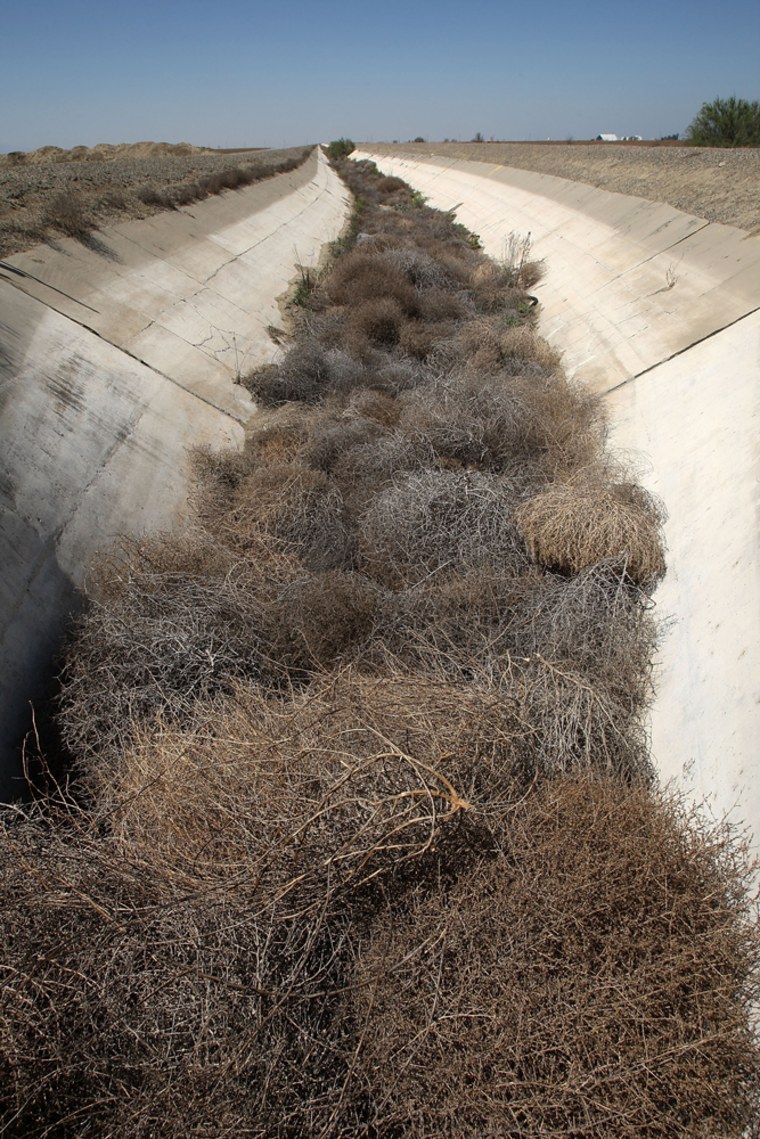Americans are using less water per person now than they have since the mid-1950s, thanks to water-saving technologies and a nationwide push to safeguard dwindling supplies.
A report released Thursday by the U.S. Geological Survey also shows that industries as well as the general population are sucking up less water overall than in 1980, when the nation's thirst for water peaked.
Experts said it was particularly welcome news in the burgeoning West, where cities built in dry regions are grappling with intense disputes and ecosystem collapse tied to dwindling supplies.
"Even during a time of population growth and economic growth, we are all using less water," said Susan Hutson, a USGS hydrologist in Memphis, and an author of the report. "It's exciting to see we have responded to these crises by really seeking solutions."
California, in the third year of a withering drought, was the most water-hungry state in 2005, the most recent year for which figures were available.
California used about 9 percent of all water extracted from lakes, rivers and underground aquifers, followed by Texas, Idaho and Illinois. All told, those four states drew more than a quarter of the country's total freshwater supplies in 2005.
Nationwide, about 80 percent of the 410 billion gallons used each day went to produce electricity at thermoelectric power plants and to irrigate farm fields.
But as the drought and environmental battles persist in California, some of the state's most productive farmers are receiving as little as 10 percent of their normal supplies, forcing growers to leave hundreds of thousands of acres unplanted and lay off thousands of farmworkers.
This year, city dwellers, too, have been forced to shorten their showers and let their lawns turn brown under mandatory water rations.
"We still have collapsing ecosystems because of water use, we still have rivers and aquifers that are overtapped, and we still have rapid population growth," said Peter Gleick, president of the Pacific Institute, an environmental think tank based in Oakland. "I guess the optimistic way to put it is, we're learning our lessons about smart water use but we have a long way to go."
Occasional shortages and disputes have arisen even around the water-rich region of the Great Lakes, which hold 95 percent of the nation's fresh surface water and meet the drinking needs of 34 million people in eight states.
Last year, the states signed a compact that limits any diversions of lake water to areas outside the drainage basin, in reaction to fears of Sun Belt water grabs.
Scientists with the Intergovernmental Panel on Climate Change have warned that climate change will exacerbate water scarcity problems around the world. Computer models suggest a warming climate may send the Great Lakes' levels substantially lower by century's end.
"The pressure's on to conserve," said Tim Eder, director of the Great Lakes Commission, an interstate agency. "We're trying to position ourselves so we'll have an abundant supply that can be used sustainably, particularly if businesses want to relocate here from places where water is expensive or unavailable."
